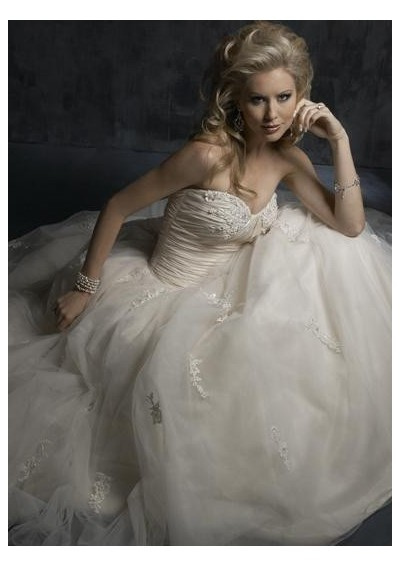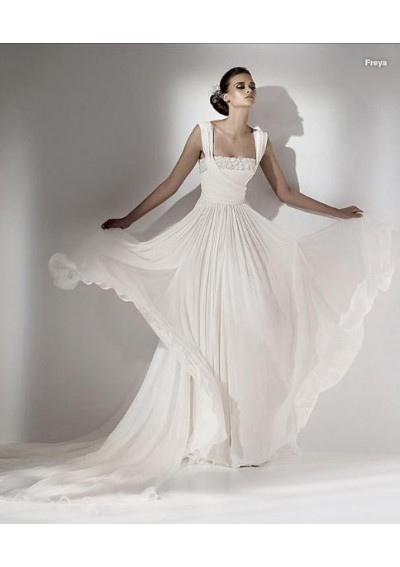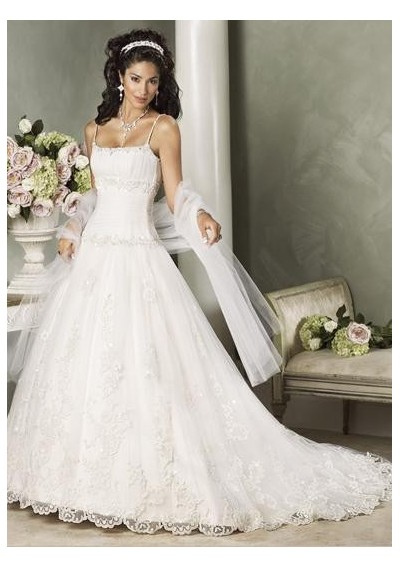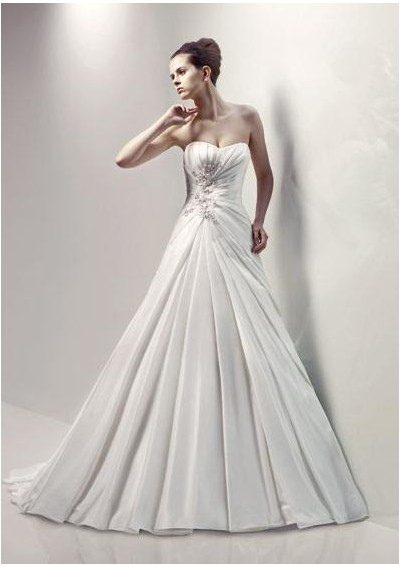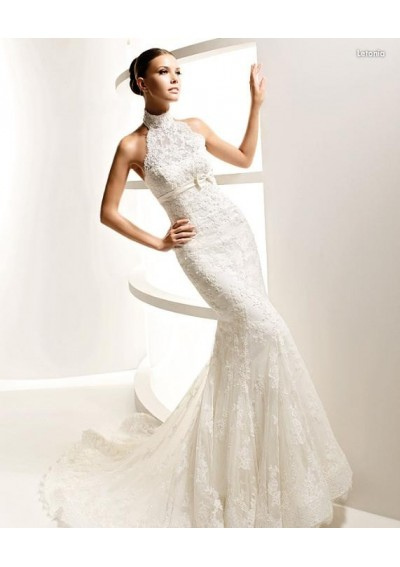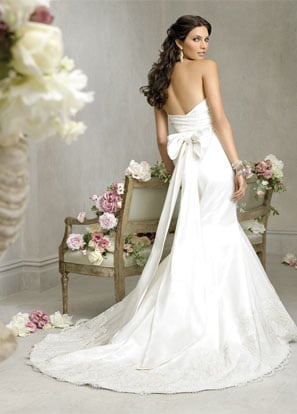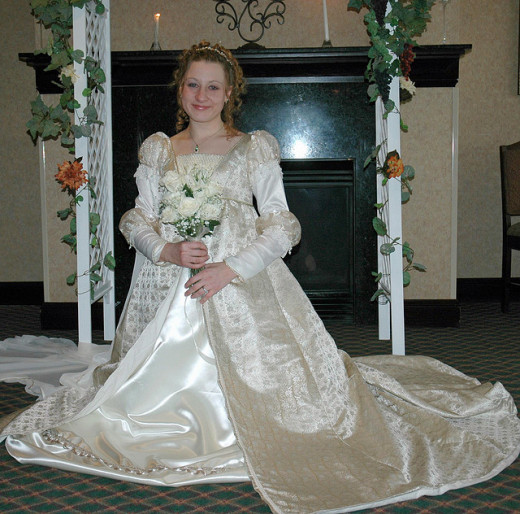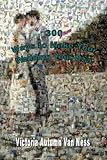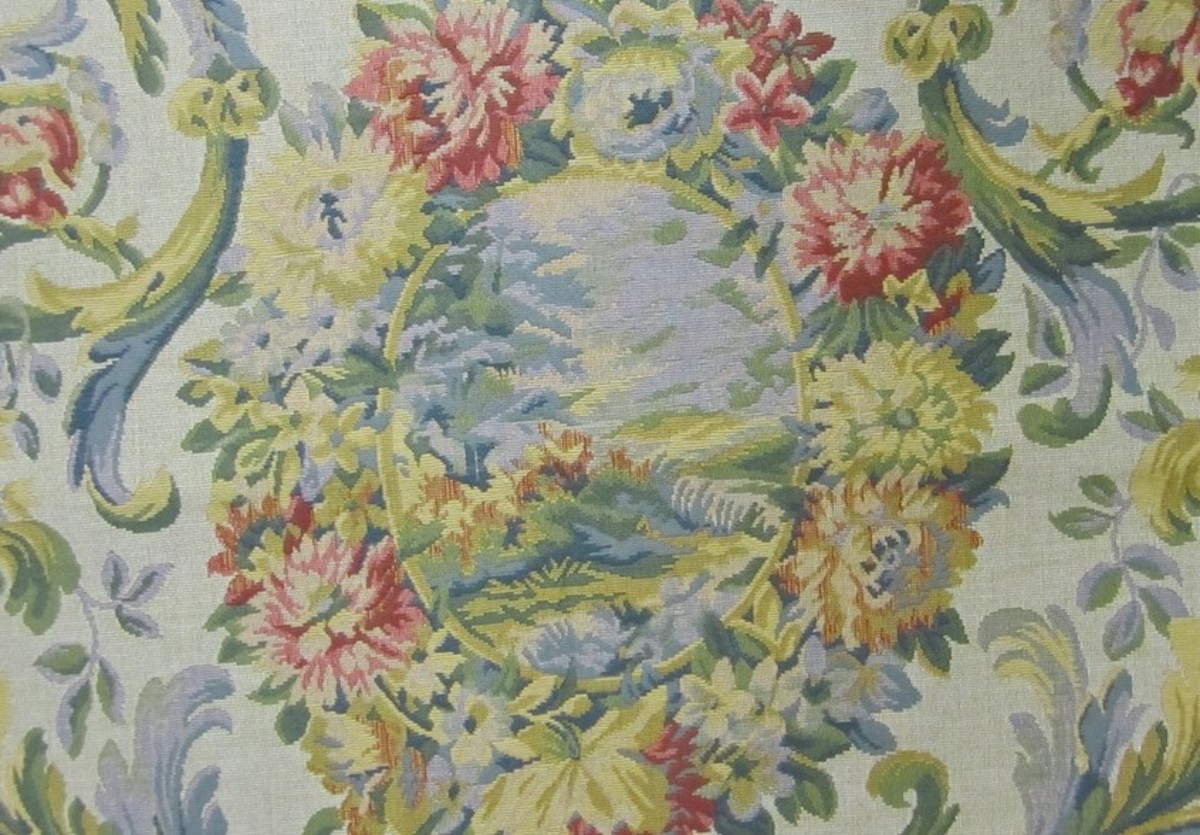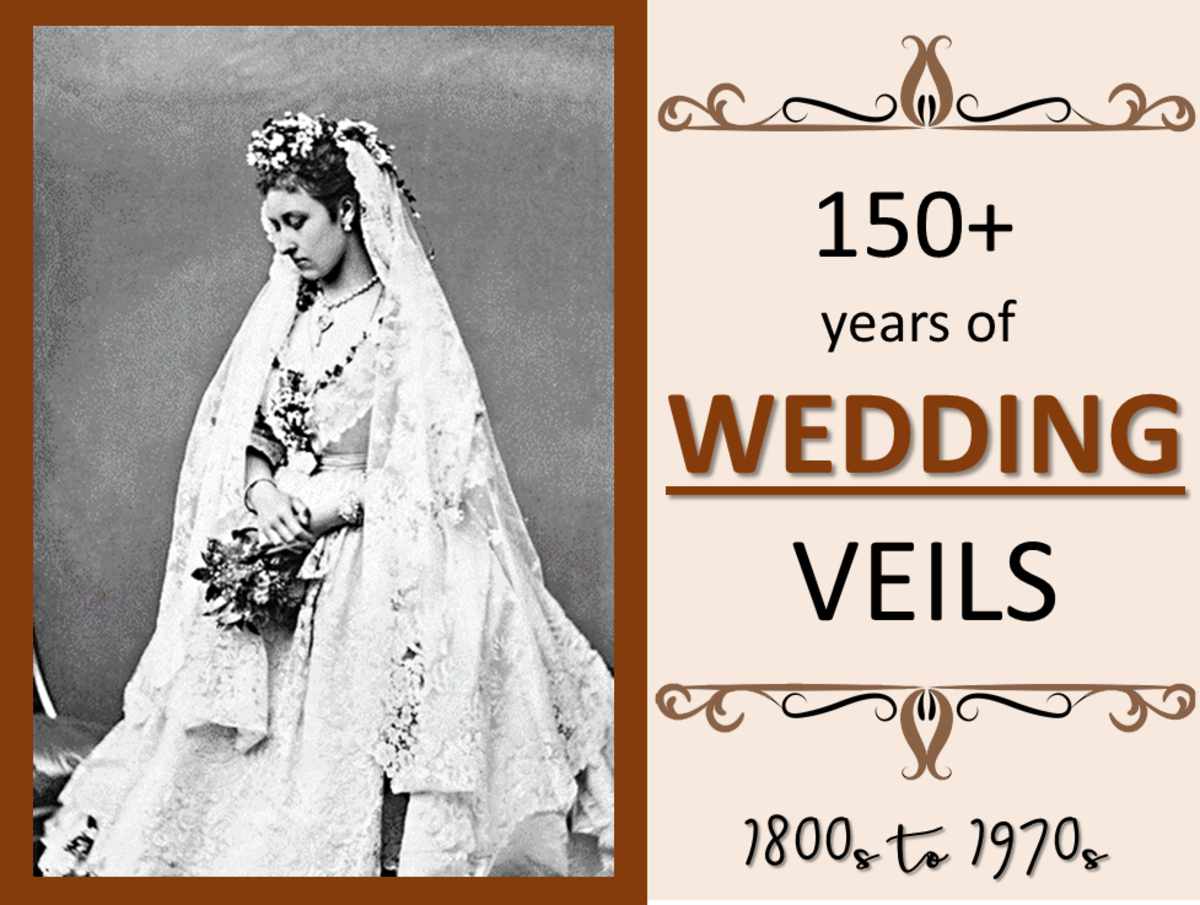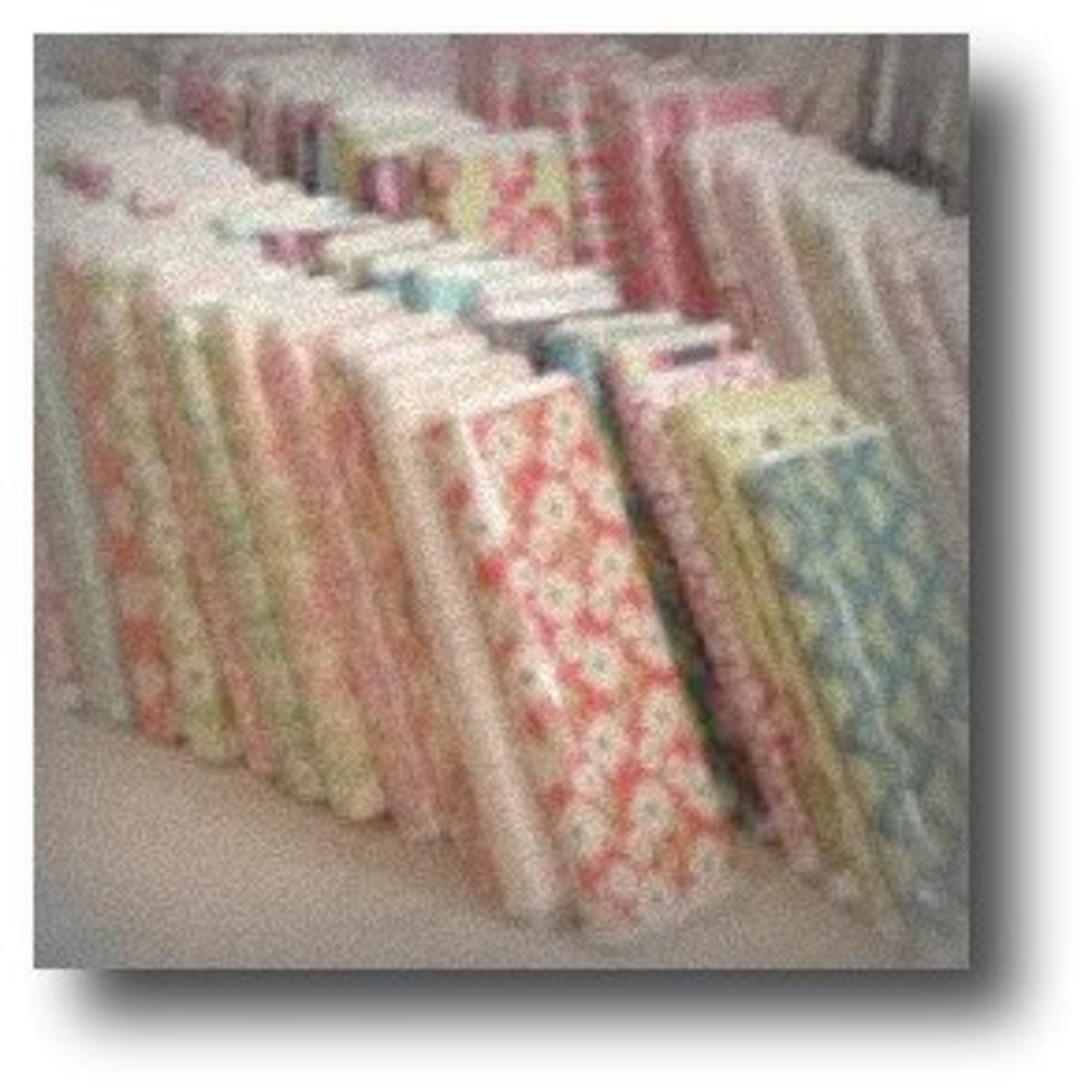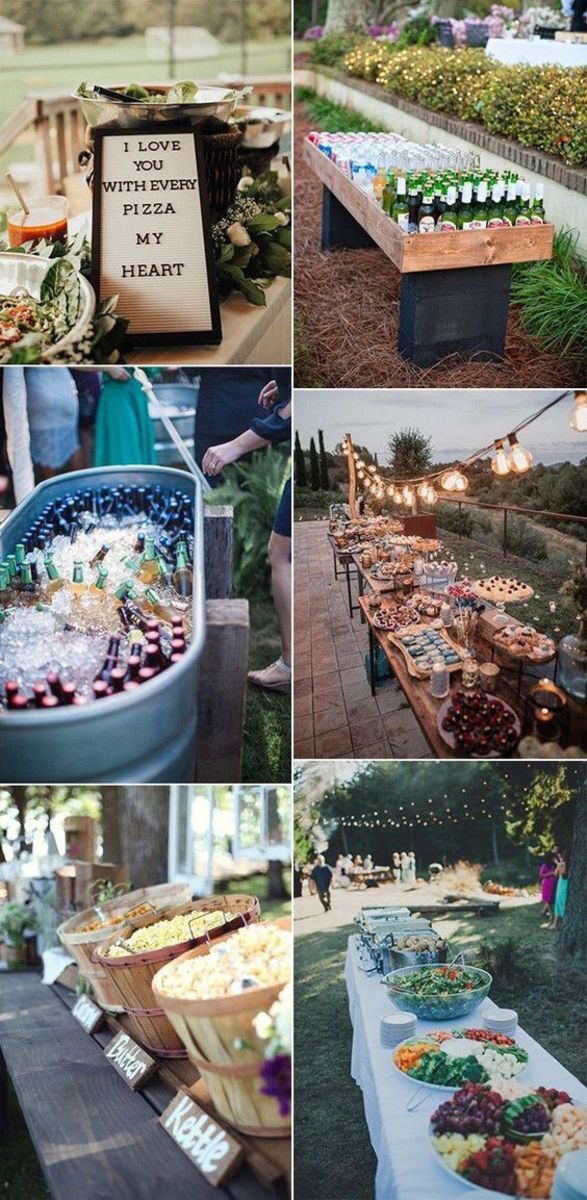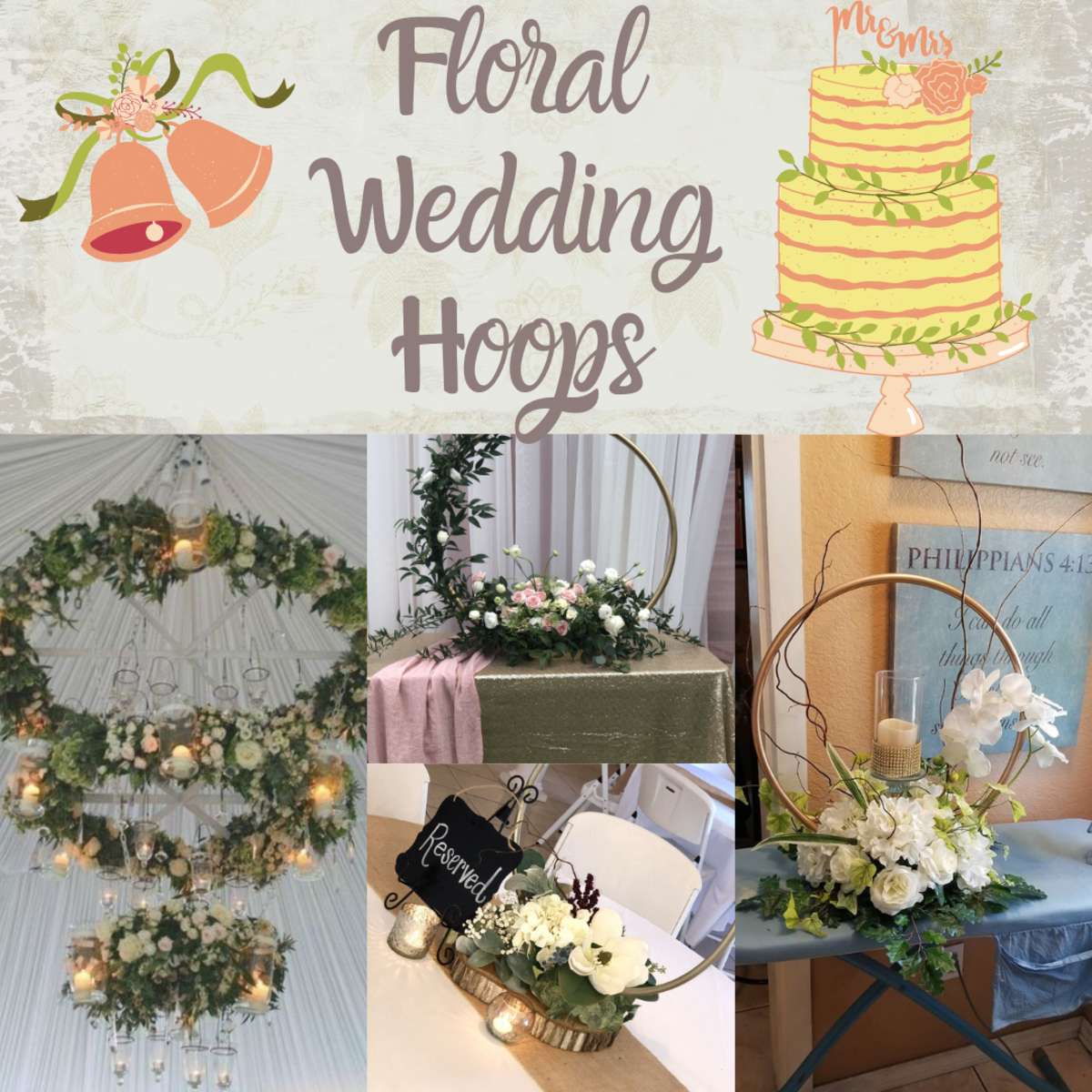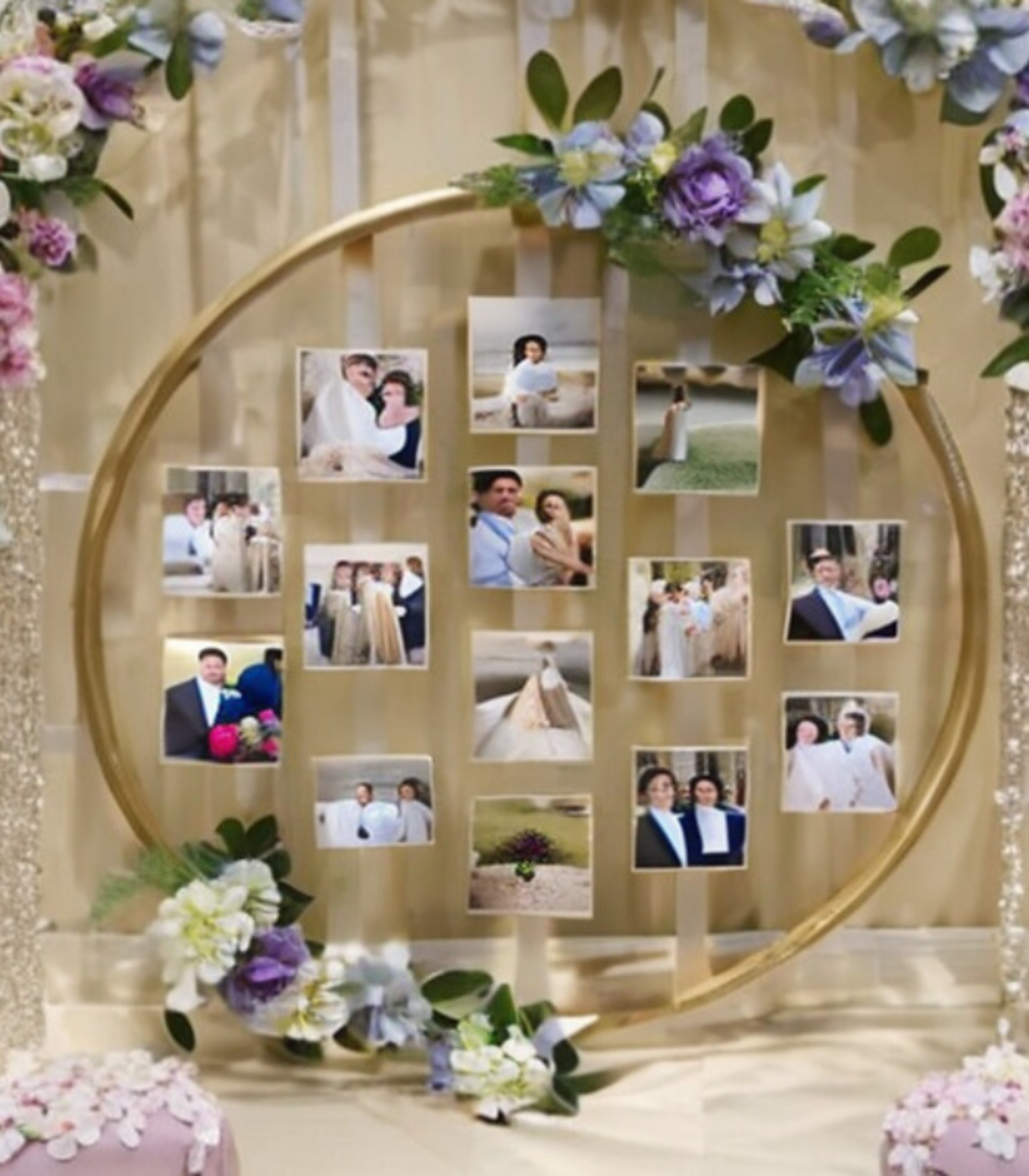Wedding Dress Fabric Choices Defined
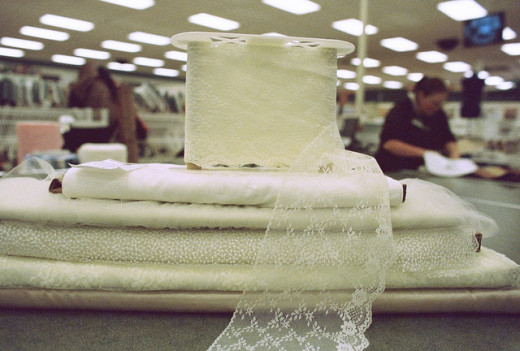
As I promised, I have searched the internet and every book I have to give you the most complete listing of bridal fabrics available. There are 66 different types of fabrics included, among them different lace patterns and natural fabrics for the Eco-friendly. This by no means is a complete listing of all of the fabrics available for your use if you are making your own wedding dress and/or bridesmaids' dresses.
However, this is as complete a listing as I am able to provide of "bridal" fabrics on the market and being used in high-end designer bridal gowns. I've attempted to include links for you to visit if you need a better description of any of the fabrics listed or wish to see pictures of any of them. I have also included a slide-show of wedding dresses made from a some of these materials so you can see them for yourself.
For your ease and education, silk and organza are the most common fabrics for making wedding gowns. Organza is typically used as an overlay or illusion-like fabric due to its texture and softness. Silk is a hardy material with a slight sheen used as a base or underlay for wedding gowns. It is also very soft on the skin. I hope you enjoy!
Alencon Lace – A fine French needlepoint lace with corded designs on sheer net background.
Bamboo - This is a soft, Eco-friendly fabric and has the ability to keep you warm in winter and cool in summer. It has unique antibacterial properties that make it perfect for brides who suffer from skin allergies.
Batiste - A lightweight, soft, and transparent fabric in plain weave. Made from cotton or linen such as cambric, it is most often used as a lining for high-end dresses.
Battenburg Lace – This is a type of tape lace made by strips of fabric decorated in delicate floral or geometric designs. It is absolutely gorgeous!
Beaded Lace - This is a muted floral design embellished with beads, crystals and sequins, often used as an appliqué to create effect.
Brocade – This is a heavy fabric woven to create a multi-tone look, richly decorated in a shuttle-woven pattern. This is the fabric traditionally worn by royalty.
Burnout – Chiffon or organza-based fabric that has been put through a chemical process that dissolves certain fibers leaving a transparent pattern in the backing.
Chantilly Lace - A fine, hand-made bobbin lace, known for its fine net ground, abundant detail and floral design features outlined with silk threads.
Charmeuse – A lightweight satin used in the slinky gowns of the 1930s, this is the material of choice in lingerie and nightgowns. In formal gowns it tends to be used for lining and cut on the bias.
Chiffon – Sheer and lightweight, chiffon can be a great choice for an outdoor wedding. This fabric offers elegant drape and dramatic fluidity to any wedding gown.
Chiffon Fog Foil – A sheer, flowing fabric different from chiffon only because of its subtle metallic surface that gives it a unique multi-dimensional effect.
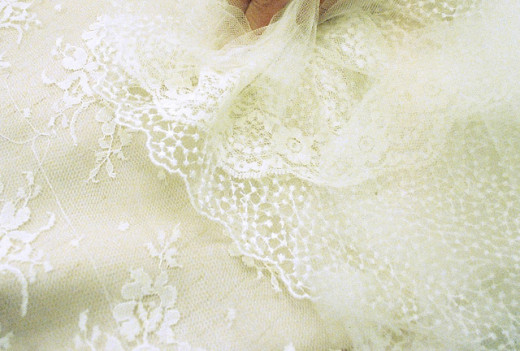
Clip dot – A lightweight, sheer and gently crinkled fabric, this fabric has delicately woven in satin-like dots made of extra warp or filling yarn.
Crepe – Made of silk, wool or polyester fabric, thin and lightweight, crepe is characterized by its pebbled texture and crisp appearance.
Corded Lace - Originally made exclusively in France, these laces are extremely elegant. This plain lace is given a three-dimensional look with a heavier cord outlining areas in the lace.
Crepe de Chine - This is an opulent fabric made of silk, with a glossy luster and a subtle texture. It is rather lightweight, if not surprisingly so, and is resistant to wrinkles.
Crinkle Chiffon – A lightweight, gently-textured sheer fabric made of silk with a fluid movement. It has a delicate flat-crepe texture, dull, soft finish and signature crinkly stiffness.
Crinoline - A stiff transparent mesh foundation fabric that's used as an underskirt with a ball gown style wedding dress to give more fullness and height to the skirt. Very rough on your skin and will need a liner or petticoat underneath to protect your skin.
Crushed Velvet - Thick piles of different heights make this woven fabric have a crushed look that glimmers in certain light. It is traditionally made by purposely pressing the velvet down in different directions or mechanically twisting it.
Damask - Made with silk, wool, linen, cotton, or synthetic fibers, with a pattern formed by weaving. Similar to brocade with raised designs, but lighter in weight.
Double-faced satin – Heavier weighted satin, with a sheen and a satin weave on both sides, this is used for structured styles and tends to be high-end, couture fabric.
Duchess satin – Though it can be affordable, this is the satin often favored by high-end designers. Characterized by a heavier weight, quiet luster, it can be made of polyester, silk, rayon, or a blend.
Duchesse Lace (also known as Brussels lace or Point Duchesse lace) – A very fine bobbin lace with heavy, raised floral motifs. It is a Belgian lace that does not have a réseau, meaning that the leaves and flowers naturally join, so there is rarely a bar thrown across to connect them., making it a more continuous pattern.
Dupioni silk – This is simply a less expensive silk variety that is textured and sometimes naturally sports a wavy pattern. It is generally medium weight with a crisp, scrunchy hand, a beautiful luster, and uneven texture.
Eyelet - Featuring open-weave embroidery, breezy eyelet is typically associated with spring and summer. It is a pretty, versatile, and yet more durable than any other type of lace.
Faille – This finely ribbed silk or rayon blend. It tends to appear in couture and structured styles, with a quiet sheen that also makes it great for bridesmaids’ dresses.
Flat Taffeta – A medium-weight iridescent fabric with body, and a relaxed all-over texture and sheen.
Gabardine - A tightly woven, tough fabric with a durable finish and single diagonal lines on the face, gabardine is often used to make suits, overcoats, and trousers. It is traditionally made with worsted wool, but may also be cotton, textured polyester, or a blend.
Gazar - A type of organza, yet with more body, made from silk or wool, with high-twist double yarns woven as one. It has a crisp hand and a smooth texture, which makes it exceptional for bridal wear due to its ability to hold its shape.
Georgette - A sheer, lightweight fabric with a dull finish, made of polyester or silk with a crepe surface. It is quite durable with a graceful drape.
Guipure Lace - One of the earliest types of lace, this has a firm stiff feel with no net background, a continuous motif, usually floral or geometric, which creates a dense pattern.
Hemp - A strong yet soft fabric, often blended with silk to make really luxurious dresses. Perfect for those more environmentally conscious.
Honiton Lace – This very fine, delicate English lace’s floral and leaf pieces are bound together by small braids. Be very careful trying to clean this lace.
Illusion – A very fine, sheer mesh fabric with stretch. Illusion is often used for sleeves, to fill in a bodice, or as an overlay. It really needs to have a solid fabric underneath to look right.
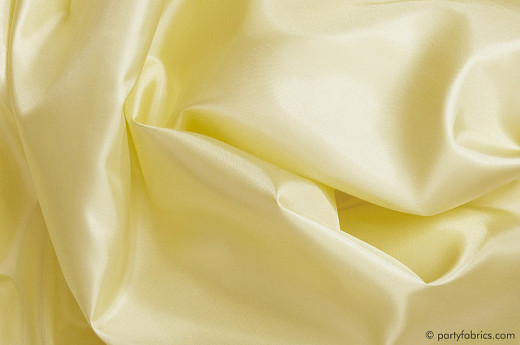
Iridescent Taffeta – Crisp, lustrous fabric cross-dyed for a subtle iridescent look. It is very crisp and looks great with velvet or as a full dress.
Jacquard - A fabric with a woven pattern and floral and/or paisley motifs. It is well suited to outdoor and garden weddings.
Jersey - A single elastic knit fabric, with lengthwise ribs on the face and crosswise ribs on the underside.
Linen – Lightweight natural fabric made from flax fiber used for more casual clothing. It is smooth, lint-free and cool to the touch. It also gets softer with washing.
Matte - Smooth fabric without a shine or glass that doesn't reflect light.
Metallic Brocade – A heavier crepe fabric woven with metallic threads or cross thread colors throughout the design to create a richly textured sheen.
Metallic Crepe – A heavier fabric woven with a rich raised design on metallic threads to create a rich, tone-on-tone pattern.
Moiré - A heavy silk taffeta, noted for a subtle, wavy watered design. It is usually produced from silk, but can also be created using wool, cotton, and rayon.
Organdy - Organdy is a stiff, transparent silk or rayon fabric. In fact, it is the sheerest, crispest cotton cloth made.
Organza – Semi-sheer, stiffer fabric holds a lot of shape, but is softer to the skin. Typically used in dress overlays.
Panne - a shimmery fabric with a pile that can shift in different directions.
Quick Poll
How familiar are you with many of these fabrics?
Peau de soie – This heavyweight satin appears most commonly on shoes and handbags, but is also used in high-end gowns. This material has a satin weave on both sides of the fabric which makes it easily reversible.
Peau Satin (or Satin Peau) - A heavy twill satin with a smooth finish and soft shine.
Pique - A knit, textured fabric with lots of tiny holes, a waffle-weave appearance, and distinct sides. The outside resembles a honeycomb or waffle and the underside is flat and smooth. There are also cord and birdseye piques.
Polyester - An inexpensive synthetic fiber that can be woven into almost any fabric. Many designers will use polyester in their dresses to bring down the price for their customers.
Radzimir - A firm, heavy fabric with a lustrous finish and an underlying cross-rib like or broken twill weave. This fabric, being so heavy is best for formal weddings and cooler climates.
Rayon - A smooth, extremely soft manufactured fabric that is similar to silk, but more elastic and affordable. It's very breathable and easy to work with.
Satin - Very common in wedding gowns, satin is a densely woven silk with a lustrous sheen on one side, but very dull on the other.
Schiffli Lace (or Chemical Lace) – This machine-made lace has delicate floral embroidery printed on a sacrificial fabric that has been chemically treated so as to disintegrate after the pattern has been created.
Shantung – A lightweight version of dupioni with a light-catching glimmer to it. Shantung has a nubby, irregular texture normally used for more structured styles.
Silk - The most common, cherished, and priciest wedding gown fabric, silk is a smooth and soft natural fiber.
Silk-faced Satin - A smooth silk satin, with a glossy front and matte back.

Silk Gazar - A four-ply silk organza.
Silk Mikado - A blended silk, silk mikado is usually heavier than regular silk.
Soya - Often called ‘vegetarian cashmere’ this is light, silky and soft with a bit of stretch – just perfect for a wedding dress. This is ideal for a destination gown as it is UV resistant and keeps you cool in hot weather
Taffeta – A crisp and lustrous fabric with a trademark rustle.
Tissue Taffeta – Lightweight, voluminous fabric with a slightly crinkled finish.
Tulle – A fine, stiff netting that is rough to the skin.
Velvet - luxurious heavyweight fabric woven with a cut pile finish made of silk, velvet or rayon. Finish creates a soft feel with subtle shine.
Venise Lace – Heavy raised floral, foliage, or geometric designs give this lace its trademark chunkiness.
Voile -- Very lightweight, semi-transparent fabric woven from cotton, linen, synthetics and cotton blends.
Yoryu - is 100% polyester microfiber with a permanent vertical crinkle.
Ziberlene - Similar to Mikado but heavier.
Choosing a wedding dress is already difficult enough without all of these crazy terms being thrown your direction. Hopefully this and some of my other articles regarding wedding dresses will help you to sort though all of the new vocabulary, feeling and sounding a little more educated.
Obviously you'll be able to make a better decision regarding your dress and fabric choices with more information!









